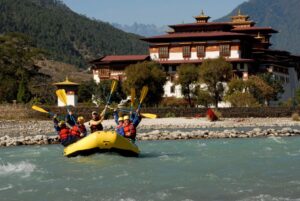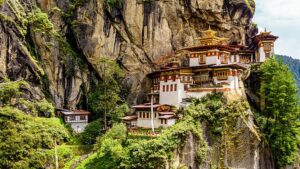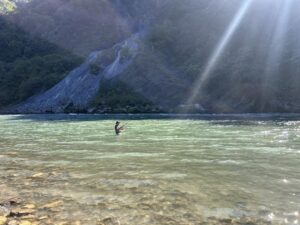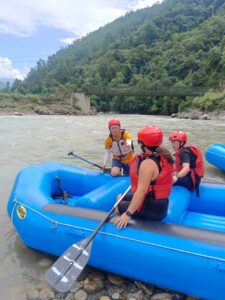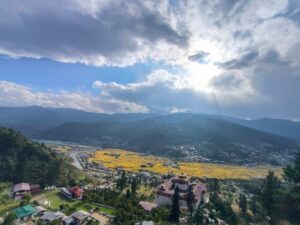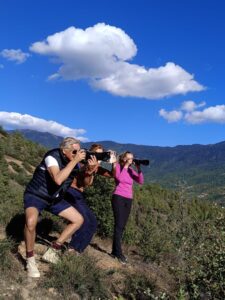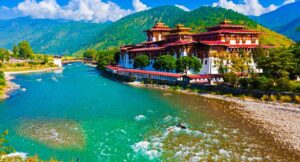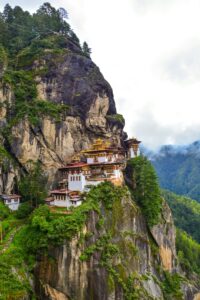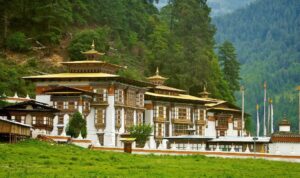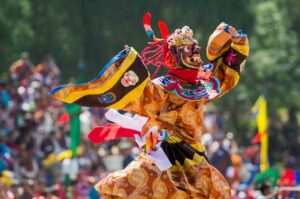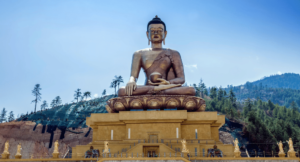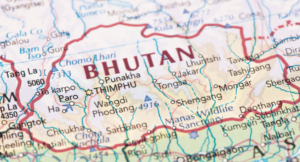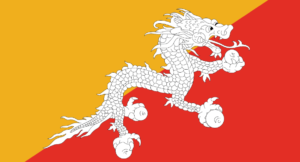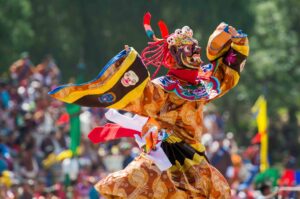About Bhutan
Here are some key aspects about Bhutan
Bhutan, often referred to as the “Land of the Thunder Dragon,” is a small, landlocked country nestled in the eastern Himalayas, bordered by India to the south, east, and west, and by China to the north. Despite its small size, Bhutan is renowned for its stunning natural beauty, rich cultural heritage, and unique approach to governance, centered around the principle of Gross National Happiness (GNH).
Bhutan is characterized by its diverse and pristine landscapes, ranging from towering snow-capped peaks in the north to lush subtropical plains in the south. The country is dotted with dense forests, cascading rivers, serene valleys, and picturesque villages, making it a paradise for nature lovers and adventurers alike.
Bhutan boasts a vibrant cultural heritage that is deeply rooted in Buddhism. The country is dotted with ancient monasteries, dzongs (fortress-monasteries), and sacred sites, many of which are UNESCO World Heritage Sites. Bhutanese traditions, festivals, and art forms, including intricate thangka paintings and colorful masked dances, are integral parts of everyday life.
Bhutan is known for its unique governance philosophy of Gross National Happiness (GNH), which prioritizes the well-being and happiness of its citizens over purely economic indicators. This holistic approach to development encompasses sustainable socio-economic progress, environmental conservation, cultural preservation, and good governance.
Bhutan is recognized as one of the world’s most environmentally conscious nations. The country’s constitution mandates maintaining at least 60% forest cover for all time, and it currently exceeds that goal, with approximately 70% of its land under forest cover. Bhutan has also committed to remaining carbon-neutral and sustainable development through initiatives such as hydropower generation and eco-tourism.
Bhutan’s government has adopted a policy of “High-Value, Low-Impact” tourism to preserve its cultural heritage and pristine environment. Visitors to Bhutan must book their travel through authorized tour operators and pay a daily tariff, which includes accommodation, meals, transportation, and a sustainable tourism fee. This approach helps control tourist numbers while ensuring that tourism benefits local communities.
Overall, Bhutan’s blend of natural beauty, cultural richness, and progressive policies makes it a truly unique destination that captivates the hearts and minds of travelers from around the world.
Nestled in the Himalayas, Bhutan is a landlocked country bordered by India and China. Our country is home to some of the world’s tallest unclimbed mountains (such as Gangkar Phuensum) and its pristine forests are home to rare and endangered wildlife.
A visit to Bhutan is like taking a step back in time – it’s a land where traditional values and an old way of life are still practiced and, where visitors can get a rare glimpse into another world. While Bhutan is best known for its stunning mountain scenery with a strong emphasis on environmental conservation, there is so much more to this country than meets the eye. Bhutan has a rich history dating back centuries, and its people have a deep cultural heritage that is evident in everything from their crafts and architecture to their music and dance.
Bhutan, also known as the last ‘Shangri-La’ on earth, the land of the Thunder Dragon, of ancient temples and fortresses, Bhutan is a country of breath-taking natural beauty and ancient cultural treasures. Bhutan is also the only country in the world that measures its success in terms of ‘Gross National Happiness’. Bhutan has some of the highest peaks on the planet, where unique and beautifully architectures monasteries clings to its cliffs majestically.
It’s also one of the least-visited non-hostile country on earth, because it adheres strongly to a policy of ‘High Value, Low Impact’ tourism which serves the purpose in making tourism in Bhutan an exclusive and distinctive experience.
REACHING BHUTAN
Reaching Bhutan involves several transportation options, primarily through air travel due to its landlocked location and rugged terrain. Here’s how you can reach Bhutan:
Paro International Airport: Located in the western part of Bhutan, Paro International Airport is the sole international airport in the country. It serves as the main gateway for travelers arriving by air. Airlines such as Druk Air (Bhutan’s national carrier) and Bhutan Airlines operate regular flights to Paro from cities including Bangkok, Delhi, Kolkata, Kathmandu, Singapore, and Dhaka.
Bagdogra Airport (India): Some travelers opt to fly to Bagdogra Airport in the Indian state of West Bengal, which is relatively close to Bhutan’s border. From Bagdogra, travelers can continue their journey to Bhutan by road via the Jaigaon-Phuentsholing border crossing.
Phuentsholing (Bhutan-India Border): Phuentsholing is the main entry point for travelers entering Bhutan by road from India. It is located in the southern foothills of Bhutan and shares a border with the Indian town of Jaigaon in West Bengal. From Phuentsholing, visitors can travel further into Bhutan by road to various destinations within the country.
Gelephu and Samdrup Jongkhar (Bhutan-India Border): Gelephu and Samdrup Jongkhar are additional entry points for travelers entering Bhutan by road from India. However, these border crossings are less commonly used compared to Phuentsholing.
Regardless of the mode of transportation, visitors to Bhutan must obtain a visa before traveling. Tourist visas to Bhutan can only be arranged through authorized tour operators, who will handle the visa application process on behalf of the traveler.
Additionally, travelers must obtain a Bhutan Entry Permit, which is usually arranged by the tour operator and presented upon arrival at the immigration checkpoint.
Travel to Bhutan is subject to certain regulations and restrictions imposed by the Bhutanese government. These include the requirement to book a guided tour package through a licensed Bhutanese tour operator and the payment of a daily tariff, which covers accommodation, meals, transportation, and a sustainable tourism fee.
Overall, reaching Bhutan involves careful planning and coordination, but the experience of traveling to this unique Himalayan kingdom is undoubtedly rewarding for those who embark on the journey.
AFFORDABLE PRICE
Explore on a budget with our pocket-friendly travel options.
BEST DESTINATION
Discover top-notch destinations tailored just for you.
GREAT SERVICE
Enjoy a hassle-free journey with our exceptional service.
TOP-RATED ON LEADING PLATFORMS
Choose Enrich Expeditions for a journey that exceeds expectations





YOUR BHUTAN JOURNEY STARTS HERE WITH US
Start an unforgettable adventure with Enrich Expeditions. No matter if it’s exploring culture, embarking on a thrilling trek, or a custom trip, your dream journey begins now. Don’t wait – secure your spot and let us make your journey enriching and hassle-free





